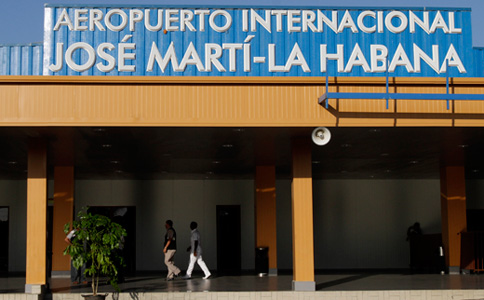
New Cuban regulations taking effect on January 14 allow for hassle-free foreign departures and easy return for travelers. Florida’s Cuban-American old guard and Washington policy makers are concerned: the Cuban Adjustment Act (CAA) of 1966 no longer serves their purposes.
“Beginning on January 1, 1959,” recalls a Cuban observer, “the U.S. government converted its migratory policy into an instrument of its political hostility used for internal destabilization and discrediting the Cuban revolutionary process. [It allowed] unrestrained emigration of those tied to the Batista regime. [Later] Cubans arriving on U.S. territory illegally would be expeditiously admitted.” The writer was referring to the CAA, by which Cubans arriving without legal papers receive social services and, after a year, permanent U.S. residence.
In addition to encouraging Cubans to risk illegal, dangerous, and expensive sea crossings to Florida and Mexico, the U.S. government has relied upon entry visas to help keep out floods of Cuban migrants. Officials recall the exodus of 1965 (Camarioca), of 1980 (Mariel), and of 1994 (the “rafters’ crisis”).
In limiting entry from Cuba, U.S. efforts jibed with onerous Cuban regulations restricting citizens’ foreign travel. To travel abroad, Cubans formerly had to secure an exit visa and show an invitation from foreign hosts. Processing fees were exacted. The government’s rationale was to ensure that skills gained at state expense by scientists, health workers, and teachers be exercised in Cuba, not overseas.
One prime U.S. object in discouraging legal exit from Cuba by holding back on entry visas was to embellish the picture of a fenced in, seething, and suffering Cuban people. The U.S. economic blockade causing food, medicine, and money shortages contributed.
Yet the U.S. government has sought to let Cuban migrants enter who looked like they are escaping communist oppression – hence the CAA, its enticement of guaranteed permanent residence, and its promise of U.S. citizenship. For U.S. managers of the scheme, Cuba would become a “pressure cooker.”
A tale of risk taking and escape is plausible only if Cuban arrivals act as if they are committed to new lives in freedom. Ideas of reconnecting with family and friends in Cuba are discouraged. Yet most of the 400,000 Cubans living abroad who visited the island in 2011 entered from the United States.
Former Miami congressperson David Rivera and current Senator Marco Rubio jointly introduced legislation in 2011 calling for loss of permanent residence for those Cubans who, having used the CAA to enter, end up returning to Cuba within five years of arriving.
Formerly, Cubans were allowed to live abroad for only 11 months, at which point they had obtain a re-entry permit and return. They could reapply to leave again. Non-return meant loss of citizenship, property, and social services. Monitoring of return reflected old concerns about keeping counter-revolutionaries from returning.
Now after two years of living abroad, Cubans – U.S. Cubans included – are allowed to renew permission by visiting a Cuban diplomatic office, anywhere. They retain Cuban citizenship. Non-citizen foreign residents may now visit the island for up to 180 days.
Needing only an entry visa from the country they’ll visit, if required, Cubans find the door opening for foreign travel, including to the United States. They can get there by way of Europe, Canada, and other countries. The United States does not require entry visas for visitors leaving from those points. A minor rush from Cuba for U.S. jobs and services becomes a possibility.
Quoting an unnamed “expert on migration,” Cuban journalist Jean Guy Allard envisions “a new type of Cuban American, with double residence, which assures that the Cuban Adjustment Act will become totally obsolete, and also counter-productive.” One single-minded U.S. critic of the Cuban revolution, Republican congressperson Ileana Ros-Lehtinen, is clearly perplexed. The immigrant daughter of a former Batista official favors “a change to the CAA so that those who use this singular and unique benefit that is only available to Cuban nationals, cannot return to visit Cuba …One cannot say that one is subjected to political persecution in Cuba, and then go back to visit.”
In October 2012, when Cuba’s migratory reforms were first announced, State Department official William Ostick charitably advised Cubans “not to risk their lives by undertaking dangerous sea journeys.” For decades, of course, the CAA has encouraged Cubans to take the risk.
In the end, U.S. disposition of its CAA rests with Public Law 104-208, immigration legislation passed in 1996. Section 606 conditions any CAA repeal on requiring “that a democratically elected government in Cuba is in power.” There is the additional challenge of redefining immigration from Cuba while trying to fix immigration policies for those on the move from elsewhere in the world.
What about U.S. citizens going to Cuba? Many Cuban solidarity activists among them, and undoubtedly others, are asking why they have to defy the law to go to Cuba while Cubans are free to go anywhere.
Photo: The entrance of Havana’s José Martí International airport in Cuba. Franklin Reyes/AP










